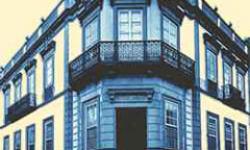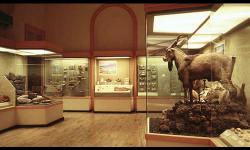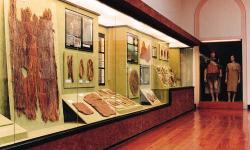The Canarian Museum is a scientific and cultural institution founded in Las Palmas de Gran Canaria, Spain in 1879 by a small number of citizens from the local bourgeoisie. The outstanding figure among this small group of social and cultural personalities of the time was Mr Gregorio Chil y Naranjo, a doctor educated abroad who had a liking for historical and anthropological studies.
The group's intention, as expressed in the constituent statutes, was to "set up a Museum where objects belonging to the natural sciences, archeology and the arts will be collected and exhibited in their corresponding sections; and a Library where to collect and preserve all the old and modern works of literature; in both cases paying special attention to matters related to the province and, above all, to this island of Gran Canaria".
From its foundation the Museum counted on the support of the City Council, which granted it the use of the City Hall's third floor, in the Plaza de Santa Ana, in Vegueta, as its premises. The Museum was sited there between 1880 and 1923. The main core of the Museum's collections (the archeological, anthropological and natural science collections as well as the Library, the Periodicals Library and the Archive) took shape during this period on the strength of its founders' contributions.
The Canarian Museum soon became a cultural point of reference in a city that was about to engage in a process of economic expansion based on the development of its port. The connections that some of its main founders had with cultural institutions and scientists helped to divulge the Museum and its collection in international circles, arousing the interest of several prestigious researchers, such as René Verneau, the French anthropologist who studied and catalogued the Museum's anthropological collection.
In 1901 Mr Gregorio Chil y Naranjo died. This event proved decisive in the history of the Museum for he bequeathed his estate to the city of Las Palmas de Gran Canaria, including his house for the Museum to be installed in it on his wife's death, which occured twelve years later, in 1913.
The severe economic crisis the islands endured during the First World War delayed the transfer of the Museum to its new premises, on the street that now bears Dr Chil's name. The founder's old home was later enlarged following the acquisition of two neighbouring houses, which completed, in 1930, the Museum's premises.
The opening of this new site gave rise as well to a new period in the history of the Museum, characterized almost totally by its economic dependence on Dr Chil's bequest and the contributions made by its members. It was also a culturally prolific period during which important researchers such as Pérez de Barradas, Wölfel, Zeuner, Benítez Padilla or Bosch Millares produced work of note.



The Canarian Museum reviews
Login to comment